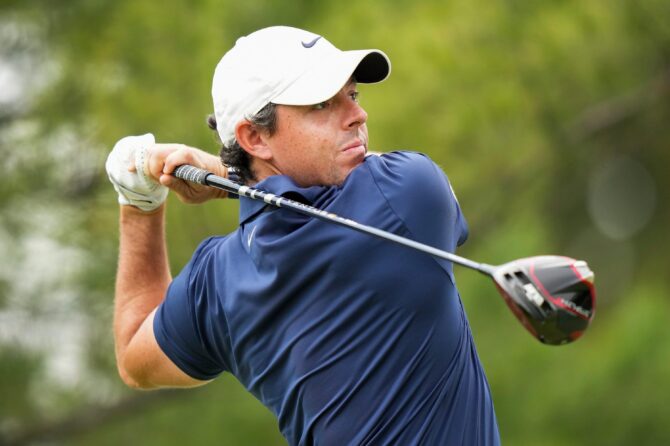Are you struggling to control your golf shots? Does the ball keep slicing and hooking instead of flying straight and true? If so, you may need to work on controlling your eye-line. Your eye-line is where you are looking when you hit the ball, and it has a big impact on your swing and how the ball travels. In this article, we will discuss how to control your eye-line for a better turn and improved contact.
– Align Your Body for a Smooth Turn
Align Your Body for a Smooth Turn
- Set a Clear Alignment: Ensure your body is in a balanced stance, with your spine straight and your shoulders relaxed. Your feet should be shoulder-width apart, with your toes pointing slightly outward. Maintain eye contact with the ball throughout the shot to establish a fixed point of reference.
- Rotate from the Shoulders: Initiate the backswing by turning your shoulders away from the target line, keeping your head down. Maintain a slight bend in your knees to prevent your body from swaying excessively. Focus on a fluid and controlled shoulder rotation to maximize clubhead speed.
- Connect the Lower Body: As the shoulders rotate, engage your lower body by shifting your weight towards your lead foot. This weight shift generates extra power and momentum, driving the clubhead back and through the impact zone with increased force.
- Maintain a Stable Spine: Throughout the entire swing, maintain a stable spine by focusing on keeping your head still and your body in a balanced alignment. Avoid excessive head movement or unnecessary body movements, as this can disrupt the swing’s rhythm and accuracy.
– Focus on Contact Point for Accurate Shots
By observing the ball as soon as it lays, you eliminate overswinging or making a rushed motion. Instead, a controlled swing helps you apply ideal force and achieve greater contact, taking you one step ahead toward hitting stunning shots every time. Besides, as you become accustomed to maintaining the gaze on the ball longer, your arms can extend freely without any hesitation, allowing for a full backswing and a smooth downswing, all factors that directly contribute to accurate and effective shots. Ultimately, keeping your eyes engaged with the ball throughout the swing not only boosts precision but also fosters composure and flow, leading to an overall enhanced golfing experience.
But how do you work towards such precision and consistency in your swing? It’s not rocket science, but it does require discipline and dedication towards practice. Firstly, position yourself correctly so you can maintain a balanced stance, with your feet shoulder-width apart and parallel to the line of play. Secondly, take the time to align yourself properly in relation to the target. Once these basics are in place, focus on keeping your head still by avoiding any unnecessary movement while taking a swing. And of course, we come back to our core technique- maintaining eye contact with the ball for as long as possible during the hitting motion.
Here’s our recommended exercise progression to improve your ball-striking consistency:
- Start with short swings, maintaining focus on contact and rhythm
- Gradually extend the length of your swing while keeping the ball in sight
- Once the extension feels comfortable, add a finish involving a full backswing and follow-through
- practice hitting balls from various positions to encounter different scenarios
Remember, consistency comes with repetition, so be patient, stay focused, and enjoy the process of elevating your skills. As you persist, you’ll undoubtedly witness a remarkable improvement in your ability to strike the ball cleanly and accurately, resulting in more controlled shots and enhanced overall performance. Let’s hit the course now and start transforming potential into excellence!
– Compensate for Slope in Your Approach
Compensate for Slope in Your Approach
Playing on a slope can significantly impact your approach shots. Uphill lies require a flatter swing with less loft, while downhill shots need a steeper swing with more loft. Here’s how to adjust your approach for different slopes:
- Uphill Lies:
– Address the ball slightly above its position.
– Use a shorter club to generate a lower trajectory.
– Shift your weight slightly forward to promote a shallower angle of attack.
– Keep your head down and focus on making solid contact with the ball.
- Downhill Lies:
– Address the ball slightly below its position.
– Use a longer club to generate a higher trajectory.
– Shift your weight slightly backward to promote a steeper angle of attack.
– Keep your head stable and make sure that your eyes remain focused on the target.
- Sidehill Lies:
– Address the ball at a slight angle to the slope.
– Position your feet perpendicular to the slope.
– Adjust your stance and swing to compensate for the angle of the hill.
- Tips for Compensating for Slope:
– Visualization: Envision the path you want the ball to take.
– Practice: Spend time practicing on different slopes to improve your technique.
– Adjust Gradually: Make small adjustments to your swing as needed to accommodate the slope.
Always look ahead to where you want the ball to go. This will help you stay focused and on track.




